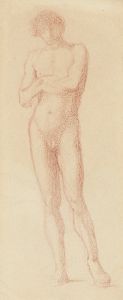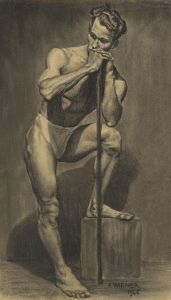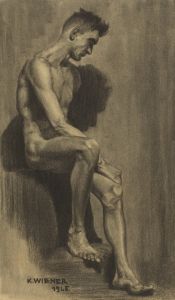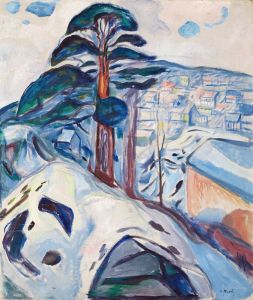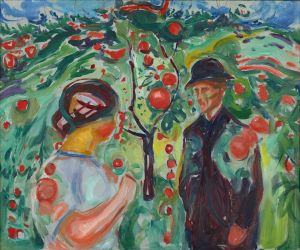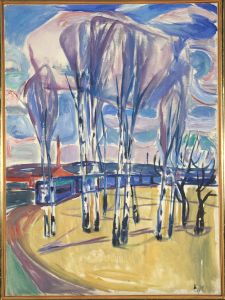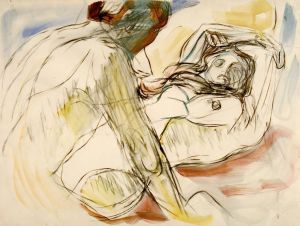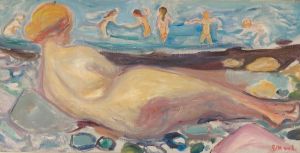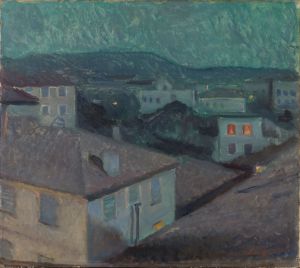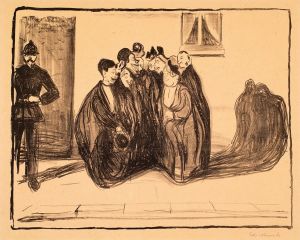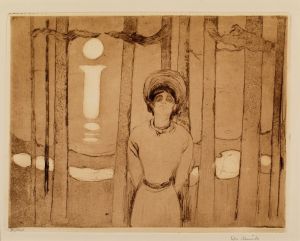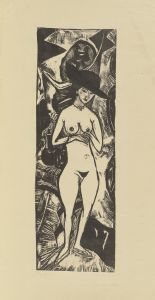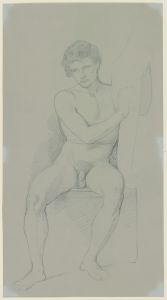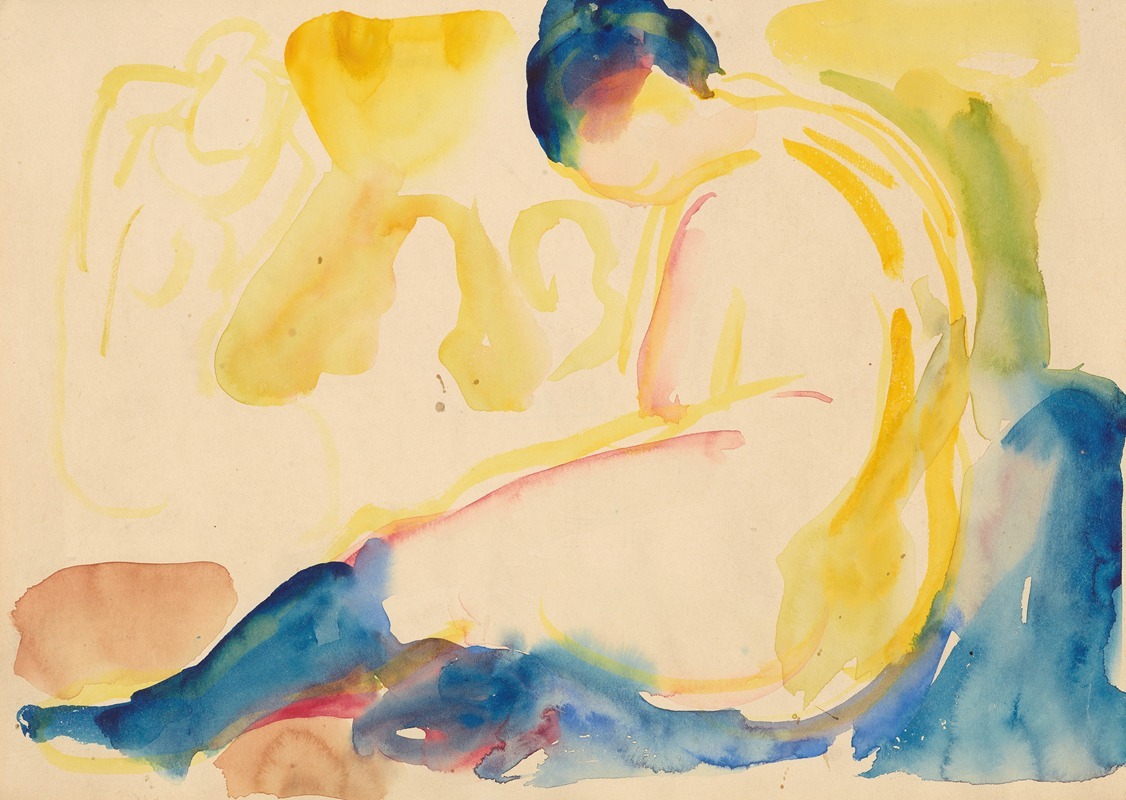
Seated Female Nude with Blue Stockings
A hand-painted replica of Edvard Munch’s masterpiece Seated Female Nude with Blue Stockings, meticulously crafted by professional artists to capture the true essence of the original. Each piece is created with museum-quality canvas and rare mineral pigments, carefully painted by experienced artists with delicate brushstrokes and rich, layered colors to perfectly recreate the texture of the original artwork. Unlike machine-printed reproductions, this hand-painted version brings the painting to life, infused with the artist’s emotions and skill in every stroke. Whether for personal collection or home decoration, it instantly elevates the artistic atmosphere of any space.
Edvard Munch, a Norwegian painter and printmaker, is renowned for his evocative and emotional works that often explore themes of existentialism, love, and death. One of his lesser-known works is "Seated Female Nude with Blue Stockings," which exemplifies his unique style and thematic interests.
"Seated Female Nude with Blue Stockings" is a painting that captures the essence of Munch's exploration of the human psyche and the complexities of human emotions. The artwork features a female figure, seated and nude, with a prominent focus on her blue stockings. This choice of attire, or lack thereof, is significant in Munch's oeuvre, as he often used clothing, or its absence, to convey deeper psychological and emotional states. The blue stockings in this painting may serve as a focal point, drawing attention to the contrast between vulnerability and a sense of identity or individuality.
Munch's use of color and form in this painting is characteristic of his broader body of work. He often employed bold, expressive colors to evoke mood and emotion, and "Seated Female Nude with Blue Stockings" is no exception. The blue of the stockings contrasts with the more muted tones of the rest of the composition, highlighting the figure's presence and perhaps suggesting a sense of melancholy or introspection. Munch's brushwork is typically loose and expressive, contributing to the emotional intensity of his paintings.
The composition of "Seated Female Nude with Blue Stockings" reflects Munch's interest in the human form and its expressive potential. The figure's pose is relaxed yet introspective, suggesting a moment of contemplation or self-reflection. This aligns with Munch's broader thematic interests in the inner workings of the mind and the complexities of human emotion. The painting does not merely depict a physical form but seeks to convey an emotional and psychological state.
Munch's work was heavily influenced by his own life experiences, including personal tragedies and existential concerns. These elements often found their way into his art, imbuing his works with a sense of depth and introspection. While "Seated Female Nude with Blue Stockings" may not be as widely recognized as some of his other works, such as "The Scream," it nonetheless offers insight into Munch's artistic vision and his exploration of the human condition.
Throughout his career, Munch was associated with various artistic movements, including Symbolism and Expressionism. His work often transcended these categories, however, as he developed a distinctive style that was uniquely his own. "Seated Female Nude with Blue Stockings" can be seen as part of this broader trajectory, reflecting Munch's ongoing interest in the emotional and psychological dimensions of human experience.
In summary, "Seated Female Nude with Blue Stockings" by Edvard Munch is a compelling example of the artist's exploration of the human form and emotion. Through his use of color, form, and composition, Munch captures a moment of introspection and vulnerability, inviting viewers to engage with the deeper emotional and psychological themes that characterize much of his work. While not as famous as some of his other pieces, this painting remains an important part of Munch's artistic legacy, offering insight into his unique approach to art and his enduring fascination with the complexities of the human condition.





